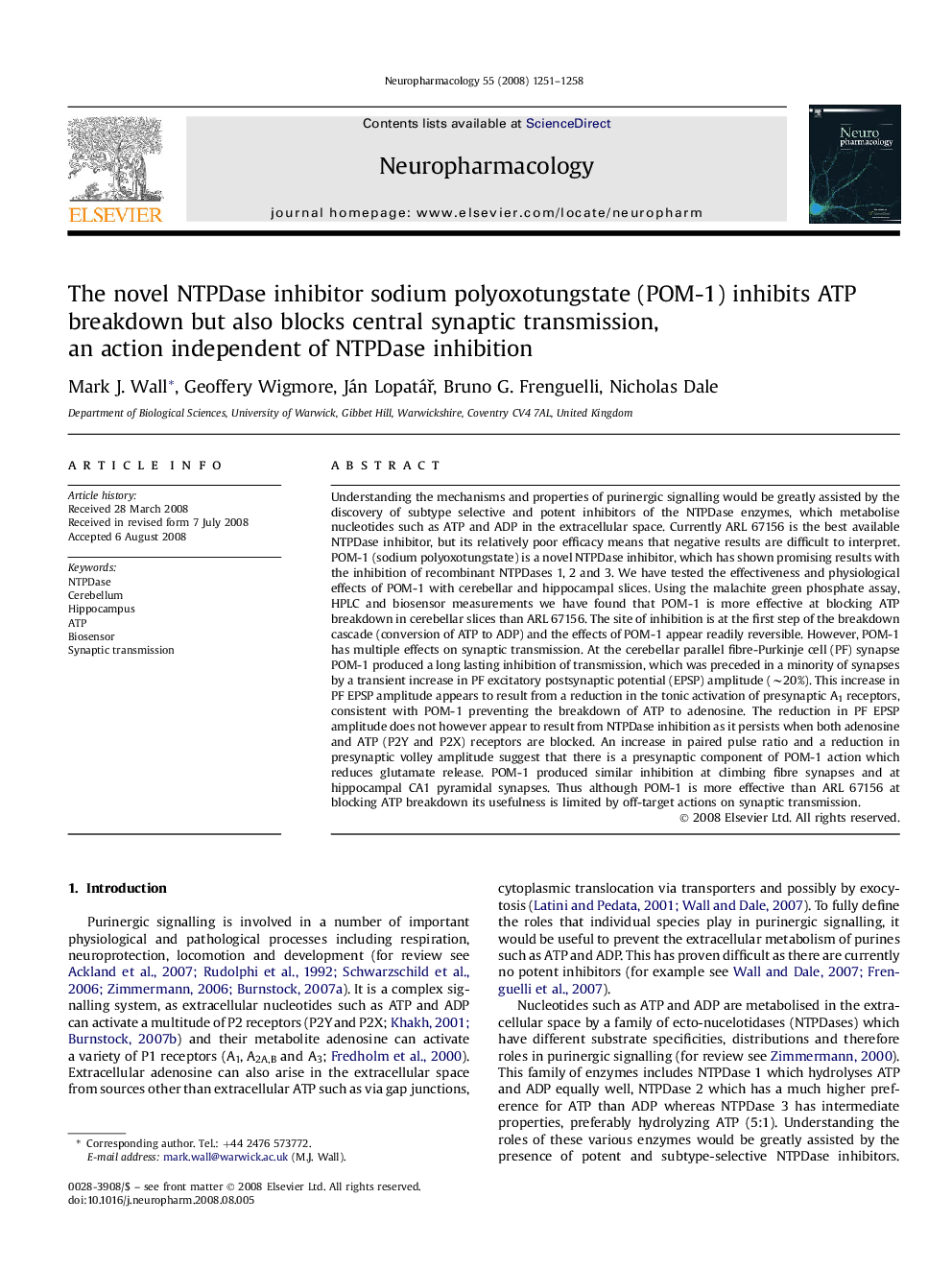| کد مقاله | کد نشریه | سال انتشار | مقاله انگلیسی | نسخه تمام متن |
|---|---|---|---|---|
| 2494543 | 1115569 | 2008 | 8 صفحه PDF | دانلود رایگان |

Understanding the mechanisms and properties of purinergic signalling would be greatly assisted by the discovery of subtype selective and potent inhibitors of the NTPDase enzymes, which metabolise nucleotides such as ATP and ADP in the extracellular space. Currently ARL 67156 is the best available NTPDase inhibitor, but its relatively poor efficacy means that negative results are difficult to interpret. POM-1 (sodium polyoxotungstate) is a novel NTPDase inhibitor, which has shown promising results with the inhibition of recombinant NTPDases 1, 2 and 3. We have tested the effectiveness and physiological effects of POM-1 with cerebellar and hippocampal slices. Using the malachite green phosphate assay, HPLC and biosensor measurements we have found that POM-1 is more effective at blocking ATP breakdown in cerebellar slices than ARL 67156. The site of inhibition is at the first step of the breakdown cascade (conversion of ATP to ADP) and the effects of POM-1 appear readily reversible. However, POM-1 has multiple effects on synaptic transmission. At the cerebellar parallel fibre-Purkinje cell (PF) synapse POM-1 produced a long lasting inhibition of transmission, which was preceded in a minority of synapses by a transient increase in PF excitatory postsynaptic potential (EPSP) amplitude (∼20%). This increase in PF EPSP amplitude appears to result from a reduction in the tonic activation of presynaptic A1 receptors, consistent with POM-1 preventing the breakdown of ATP to adenosine. The reduction in PF EPSP amplitude does not however appear to result from NTPDase inhibition as it persists when both adenosine and ATP (P2Y and P2X) receptors are blocked. An increase in paired pulse ratio and a reduction in presynaptic volley amplitude suggest that there is a presynaptic component of POM-1 action which reduces glutamate release. POM-1 produced similar inhibition at climbing fibre synapses and at hippocampal CA1 pyramidal synapses. Thus although POM-1 is more effective than ARL 67156 at blocking ATP breakdown its usefulness is limited by off-target actions on synaptic transmission.
Journal: Neuropharmacology - Volume 55, Issue 7, December 2008, Pages 1251–1258